Operation Turtle Dove is working with hundreds of people – farmers, land managers, communities and a whole host of volunteers – to create the right habitat conditions to allow Turtle Doves to thrive once more.
Below, we’ve set out some frequently asked questions and their answers to help shed some light on Turtle Doves, how they’re faring and how we are helping them.
What’s so special about Turtle Doves?
Turtle Doves have a special place in our hearts. Those of us that are a little bit older might reminisce of hot summer days in the countryside with the gentle purring of a Turtle Dove in the background. They have a strong association with the Twelve Days of Christmas and are often used as a symbol of love and fidelity. There are many references to the species across culture, including in several of Shakespeare’s plays.
Real-life Turtle Doves breed across most of Europe, into Central Asia, and part of North Africa. All breeding populations in Europe and Asia are long-distance migratory with wintering areas in sub-Saharan Africa. The UK has always been at the northerly limit of their range, and since peaking in the 1960s, the UK population has declined sharply. There have also been recent population declines of Turtle Doves on the continent (particularly north-western Europe), emphasising that these wonderful birds remain in urgent need of help.
Every autumn, Turtle Doves that have bred here over the summer undertake a remarkable 3,000-mile migration to sub-Saharan West Africa. We share ‘our’ birds with countries along their flyway and have a responsibility to do everything we can to support them whilst they are here.
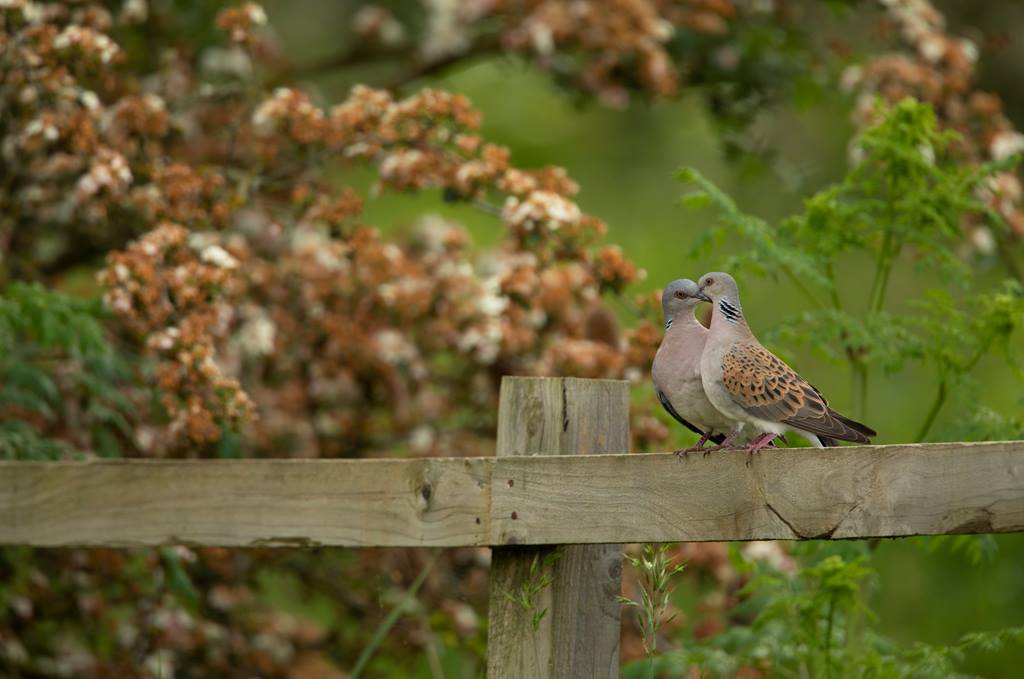
Where can I see a Turtle Dove in the UK?
Turtle Doves migrate. They are present in England from around April to September so that’s your best time to look for them. However, being scarce and very secretive, they can be hard to spot, and you are more likely to hear their distinctive, gentle, purring song that was once the characteristic sound of summer. Eastern and south-east England are their breeding strongholds but there are small numbers elsewhere, as far north as North Yorkshire.
They are best looked for close to farmed land, along field and woodland edges, hedgerows and open land with extensive patches of mature broadleaved thorny scrub. Remember though, make sure you observe Turtle Doves responsibly and ensure that they can nest and feed without being disturbed.
There are several nature reserves in England where Turtle Doves might be seen and can be safely looked for on our Where and when to see Turtle Doves page.
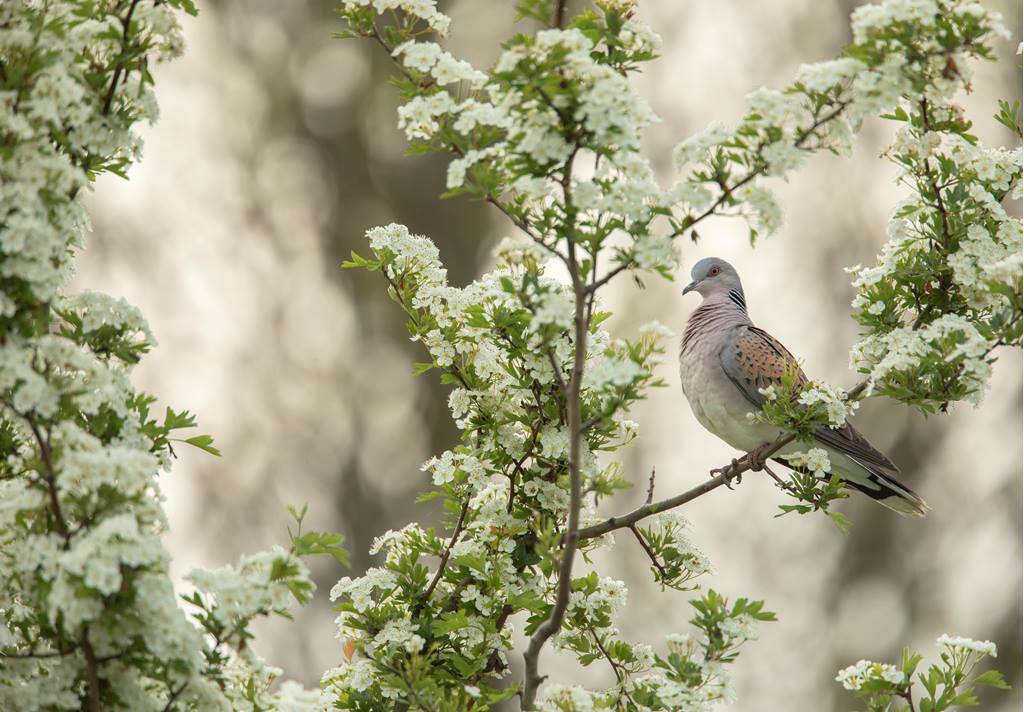
What has caused the decline in Turtle Doves?
Turtle Dove numbers in the UK have plummeted by an estimated 99% since their peak in the late 1960s. Research has shown that a loss of breeding season habitats that provide seed food for the doves was the single most important factor in their decline.
Seeds are really important for Turtle Doves – they feed almost entirely on seeds, mostly from annual and perennial plants. However, many of these plants have disappeared from our countryside, due to changes in agriculture. Parallel to the reduction in available food, the average number of chicks produced each year by each breeding pair of Turtle Doves nearly halved from the 1960s to the end of the century.
Numbers have dropped across Europe, but the steepest declines have all been in north-west regions with the most heavily intensified agriculture. Until recently, hunting was also adding additional pressure on the Turtle Doves of Western Europe. The unsustainable numbers being killed would likely have prevented the breeding population from recovering, but thankfully this has now changed.
What habitats do Turtle Doves need?
Turtle Doves are not particularly specialist in their requirements and need just three key things: food, a safe place to nest and water. In north-west Europe, Turtle Doves tend to be found on farmland using open, flower-rich habitats to forage for small seeds on the ground. The edges and corners of fields, and unmanaged areas of farms are now where these birds often feed. Heathland, dunes and even allotments also provide good feeding habitat.
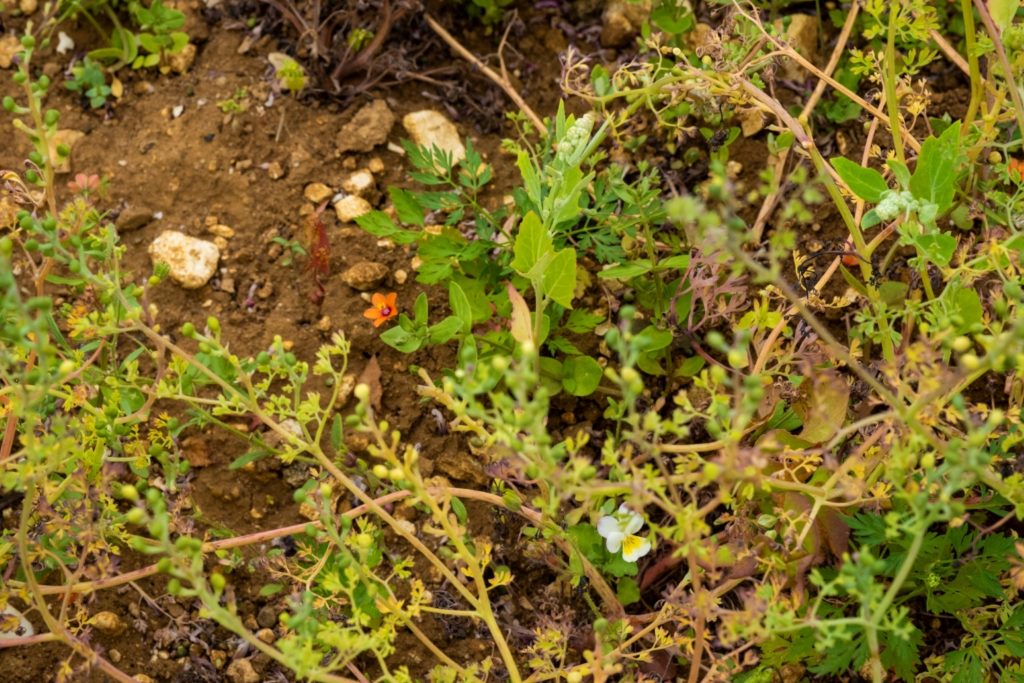
In England, Turtle Doves nest in thorny scrub and wide, tall hedgerows that are thick and dense, providing ideal cover for their nests, as well as providing for other red-listed birds like Nightingales. Farm ponds, ditches and other shallow water sources provide Turtle Doves with places to drink and bathe.
Whilst adult Turtle Doves can travel some distance to find food and water, the recently fledged young don’t stray far from the nest in their first few weeks. Therefore, importantly, these three elements need to be within a few hundred metres of each other to give them the best chance of surviving and breeding successfully. However, modern farming techniques have gradually meant that there are fewer of these habitats in the farmed landscape, and they are more dispersed.
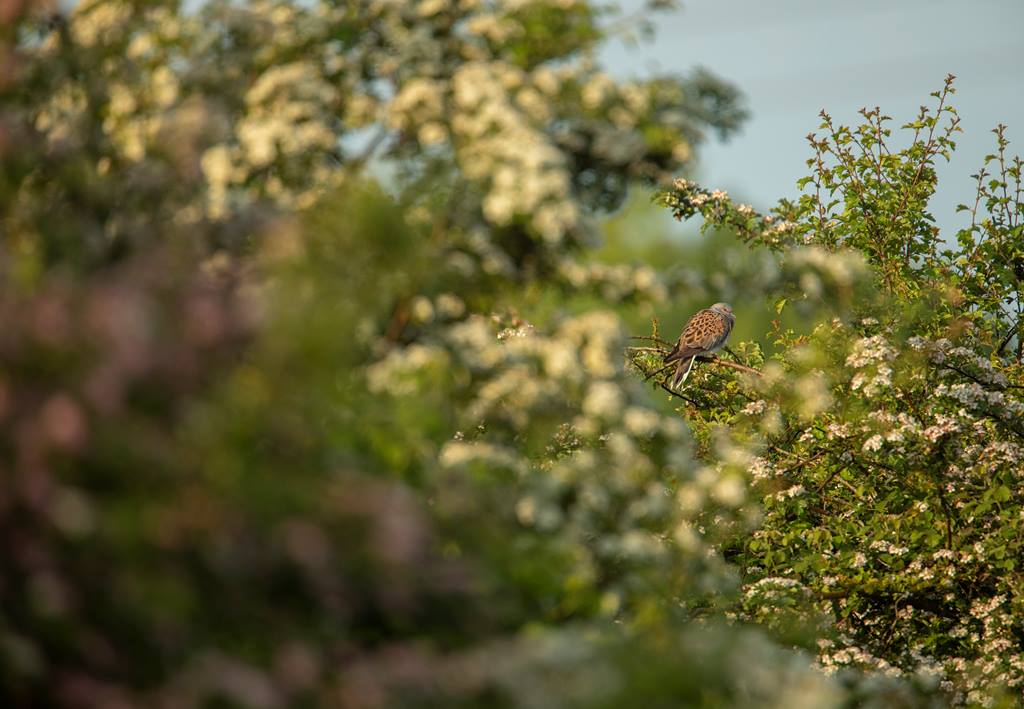
Is focusing on just one species the right approach? Isn’t lots of farmland wildlife in trouble?
We know that suitable habitat for Turtle Doves will support other species that have also experienced significant recent declines. For instance, restoring dense scrub and hedgerows will provide nesting habitat for another well-loved migratory species, the Nightingale, along with others such as the Garden Warbler, Song Thrush and Bullfinch.
Flower-rich areas provide pollen and nectar for pollinators and the seeds from these flowers provide food for other birds, mammals and insects too.
Many species benefit from accessible water, particularly during our summers which are becoming hotter and drier due to climate change. The evidence shows that when we provide Turtle Doves with good breeding season habitats, we’re automatically helping a whole host of other farmland wildlife as well.
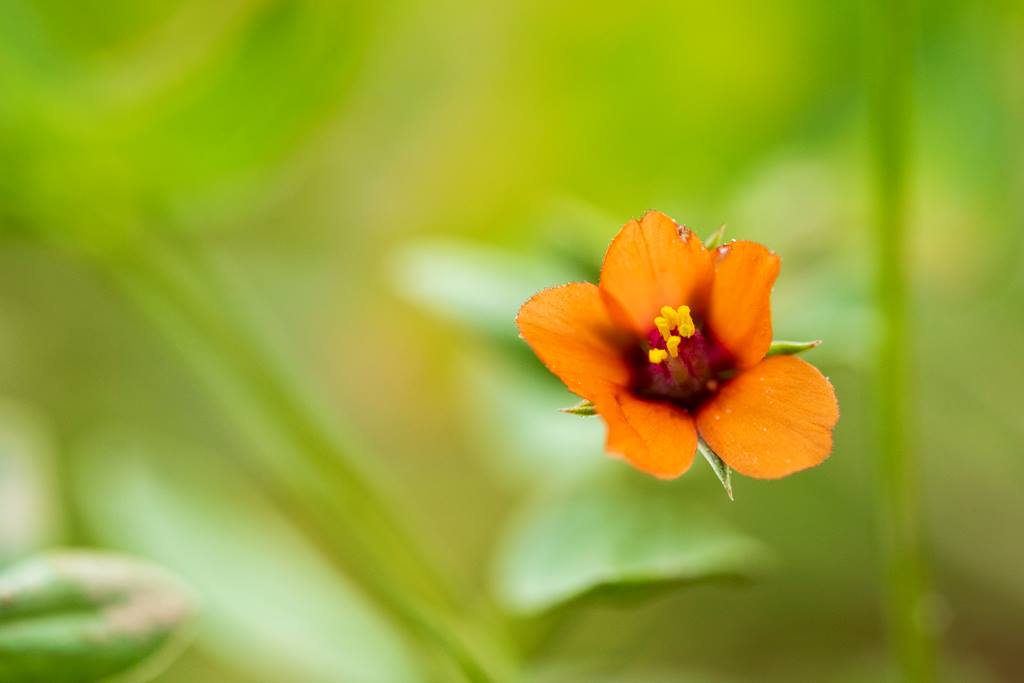
Where do the birds that visit the UK go in winter and how do they get there?
Turtle Doves are only with us for the spring and summer months, spending just one-third of their year in the UK. The rest of the year is either spent on migration or their wintering grounds in West Africa.
Using satellite tracking technology, we know that Turtle Doves that have spent the summer in the UK, migrate through France, Spain and Portugal before crossing into North Africa. They then navigate the Sahara Desert, eventually arriving in countries such as Senegal, Gambia, Mali and Mauritania. The birds return via a similar route in spring. Check out this blog post for more information about Turtle Dove migration.
Turtle Doves are just one of many birds that use the bird superhighway known as the ‘East Atlantic Flyway’. To help migratory birds we must work on the scale of their flyway, not just within a single country.
Do we know what we need to do to save Turtle Doves in the UK?
Yes. We have very good scientific evidence showing that there are two key issues to address. Firstly, we must provide them with better quality breeding habitats, particularly feeding opportunities, so that they can produce more chicks each year. Secondly, we must see an end to unsustainable levels of hunting along their flyway in south-west Europe.
Also, research shows that two other potential problems; illegal killing along the flyway and habitat loss on the West African wintering grounds currently aren’t significant issues for birds breeding in Western Europe (including UK). This allows us to focus resources on the two key issues.
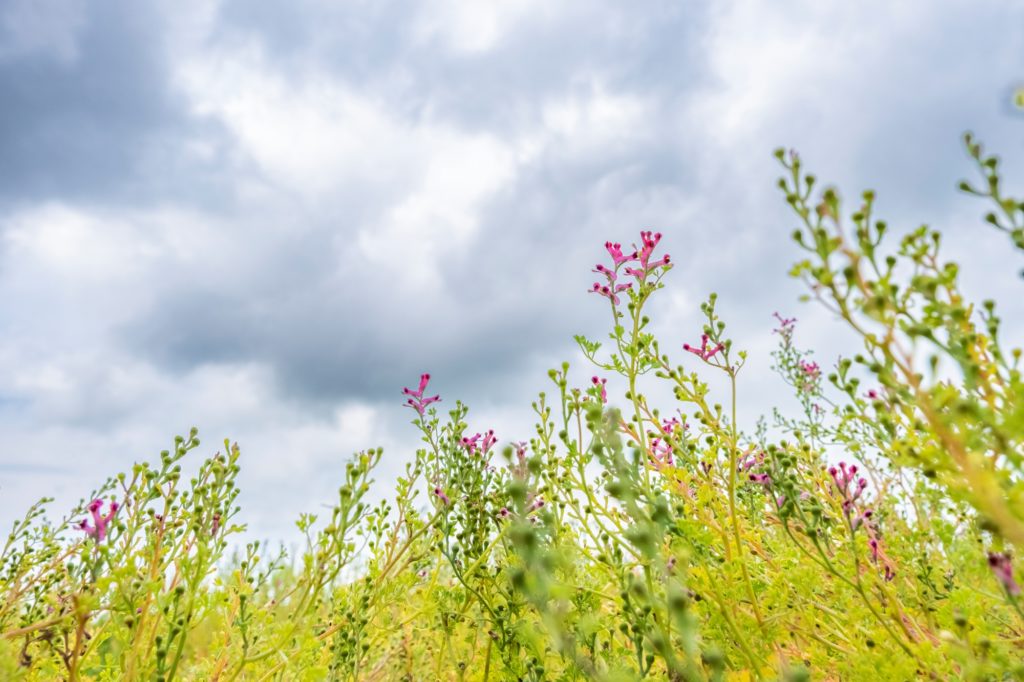
What is Operation Turtle Dove doing in the UK?
We’re working with farmers, other land managers, communities and other groups to help them create suitable habitat for Turtle Doves. We have a team of advisors who provide bespoke advice on how to create the feeding, nesting and drinking habitats that the birds need.
In 2023, our Operation Turtle Dove team worked with 370 farmers and land managers to provide an amazing 230 hectares of suitable feeding habitat. If you’re in eastern or south-east England and would like to create habitat for Turtle Doves on land you manage then please get in touch with your local advisor.
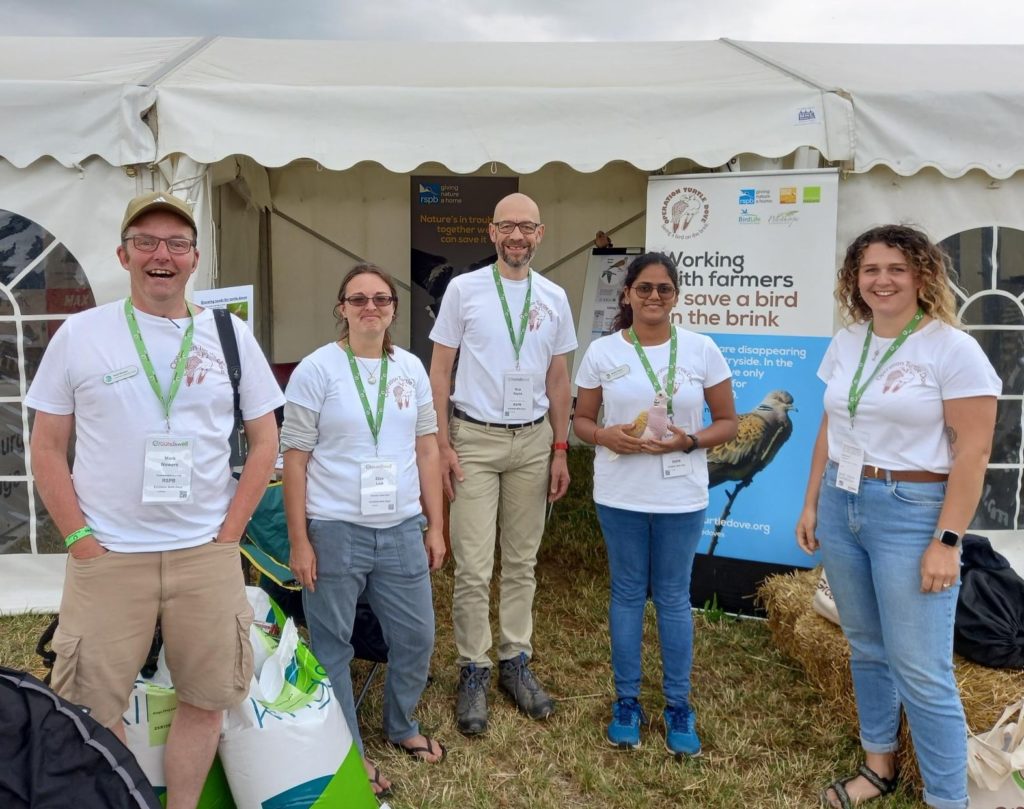
Is Turtle Dove hunting in Europe a problem?
It was, but for Turtle Doves breeding in the UK and Western Europe, it isn’t anymore. All Turtle Doves breeding in western Europe, including the UK, migrate south through three countries where the species used to be legally hunted in large numbers: France, Spain and Portugal. Up to 2018, around one million Turtle Doves were legally hunted every autumn in just these three. Research clearly showed this was unsustainable and was preventing the recovery of the entire Western European breeding population.
The publication of an International Species Action Plan for the Turtle Dove in 2018, a huge cross-border project involving experts from fifty states within the Turtle Dove’s range, was a major milestone. It recognised the impacts of hunting and drove international conservation efforts, to end unsustainable levels of Turtle Dove hunting in Europe. The result was a sustainable management system, now adopted by the European Commission. This led directly to a halt in Turtle Dove hunting in France, Spain and Portugal in 2021, 2022, and 2023 and incredibly has effectively already saved the lives of three million Turtle Doves! At least one more year of hunting ban across these countries in 2024 is anticipated to be requested by the European Commission. Hunting at any level will only be allowed to resume when there is significant evidence of population recovery.
This should mean that the hunting of Turtle Doves in Western Europe never reaches unsustainable levels again. The same process is being developed for breeding populations further east that use different migratory flyways. As a direct result, in 2023 we saw the first major reduction in Turtle Dove hunting in Italy. Even better news for Turtle Doves!
What about the birds that are killed illegally in Malta?
Sadly, Turtle Doves in Malta are subject to illegal killing as well as legal hunting. Our partner, BirdLife Malta, campaigns and works on the ground to stop all illegal killing of birds, and to ensure that the Maltese government complies with the European Commission Birds Directive regulations.
Turtle Doves that breed in the UK and across Western Europe don’t migrate via Malta. Consequently, any conservation efforts to protect Turtle Doves there will have no direct impact on numbers here in the UK or in other Western European countries.
Does Operation Turtle Dove release captive-bred Turtle Doves?
We don’t currently see the release of captive-bred birds as a conservation priority for Turtle Dove recovery, so we’re keeping our focus firmly on ensuring that there is plenty of good quality breeding habitat available when they return from Africa. Birds breeding in the UK are part of the larger Western European population of Turtle Doves and now that unsustainable hunting is unlikely to return, by far the most effective action we can undertake is to ensure that we provide them with places to feed, nest and drink so that the population can grow.
Are Turtle Doves beyond saving now?
Absolutely not! Ten years ago, the prospects for Turtle Doves in the UK looked bleak. The population was plummeting, and there was little sign of being able to either restore their breeding habitats or reduce unsustainable levels of hunting along their flyway. Now though, we have changed this completely and there are tentative signs that we are beginning to turn the corner.
Farms that lost their Turtle Doves many years ago but have since restored breeding habitats have seen birds return. Trail cameras at new Operation Turtle Dove feeding sites have recorded flocks of up to eighteen birds together.
Recovery from such a massive decline is never quick and can take decades. The great advantage that we have with Turtle Doves is that we know what their key problems are, we know what needs to be done to fix them, and we know that we’re well on the right track to doing so. By being a little patient, listening to the science, and sticking to the plan of priority actions; Turtle Doves are a conservation fight that is definitely winnable.








